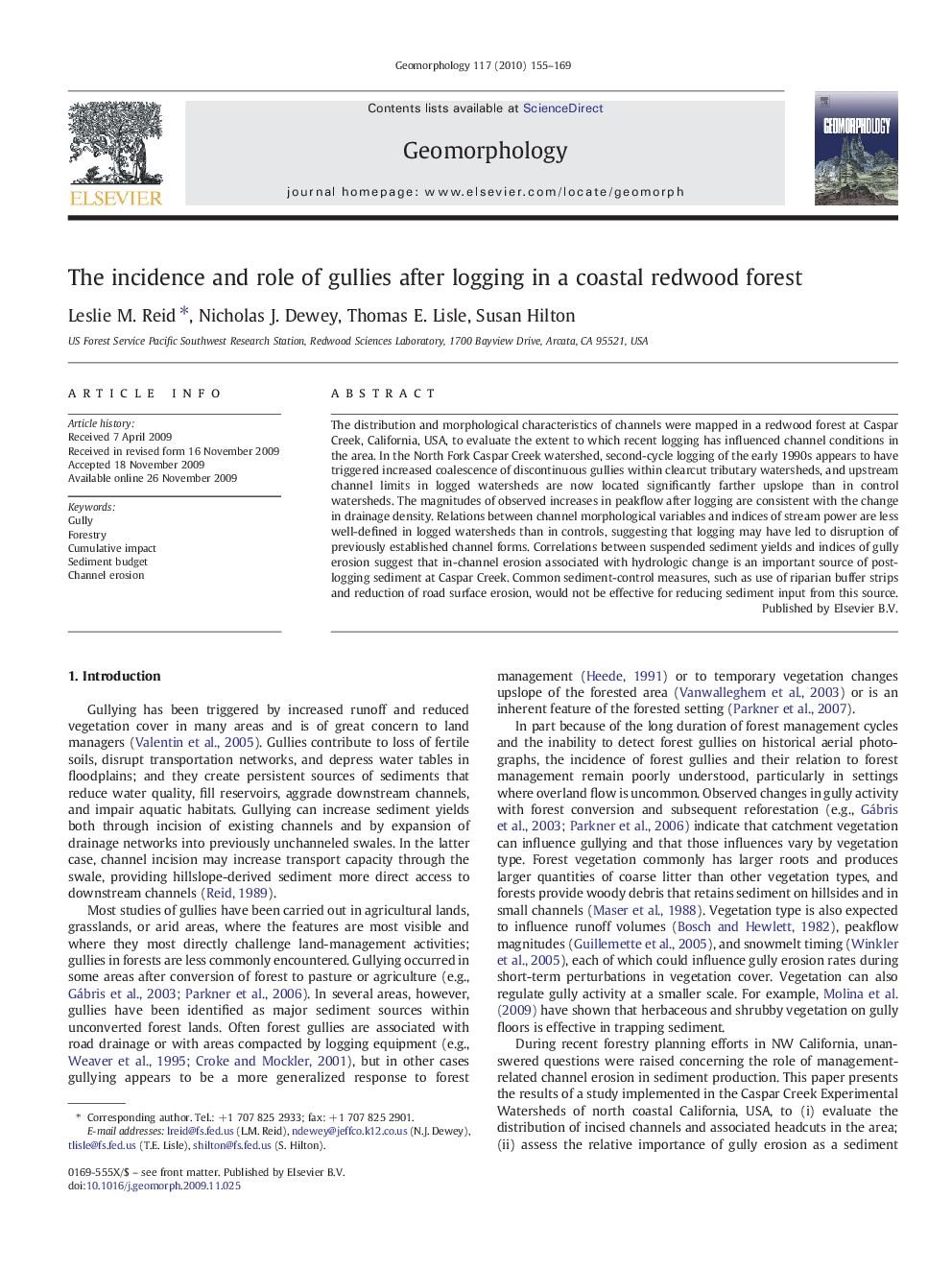| Article ID | Journal | Published Year | Pages | File Type |
|---|---|---|---|---|
| 4685945 | Geomorphology | 2010 | 15 Pages |
The distribution and morphological characteristics of channels were mapped in a redwood forest at Caspar Creek, California, USA, to evaluate the extent to which recent logging has influenced channel conditions in the area. In the North Fork Caspar Creek watershed, second-cycle logging of the early 1990s appears to have triggered increased coalescence of discontinuous gullies within clearcut tributary watersheds, and upstream channel limits in logged watersheds are now located significantly farther upslope than in control watersheds. The magnitudes of observed increases in peakflow after logging are consistent with the change in drainage density. Relations between channel morphological variables and indices of stream power are less well-defined in logged watersheds than in controls, suggesting that logging may have led to disruption of previously established channel forms. Correlations between suspended sediment yields and indices of gully erosion suggest that in-channel erosion associated with hydrologic change is an important source of post-logging sediment at Caspar Creek. Common sediment-control measures, such as use of riparian buffer strips and reduction of road surface erosion, would not be effective for reducing sediment input from this source.
